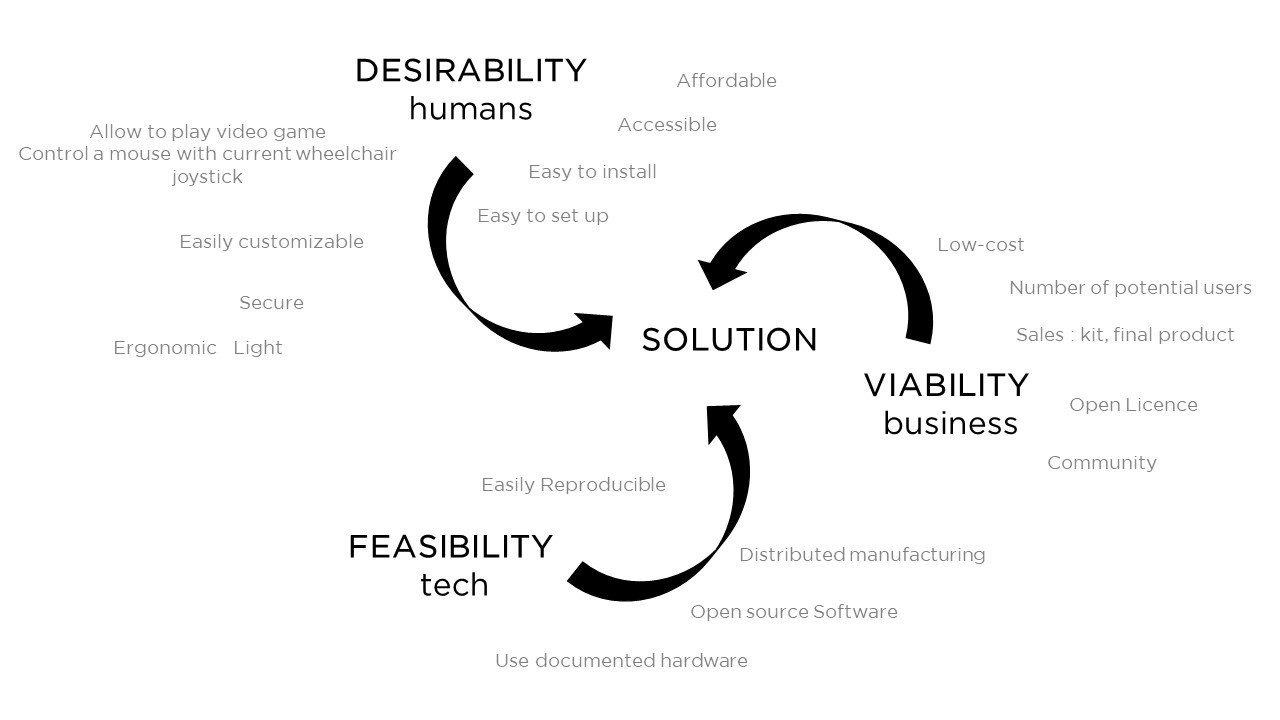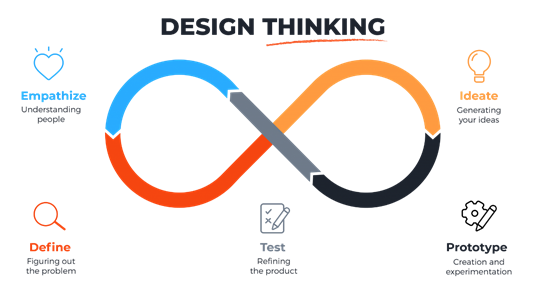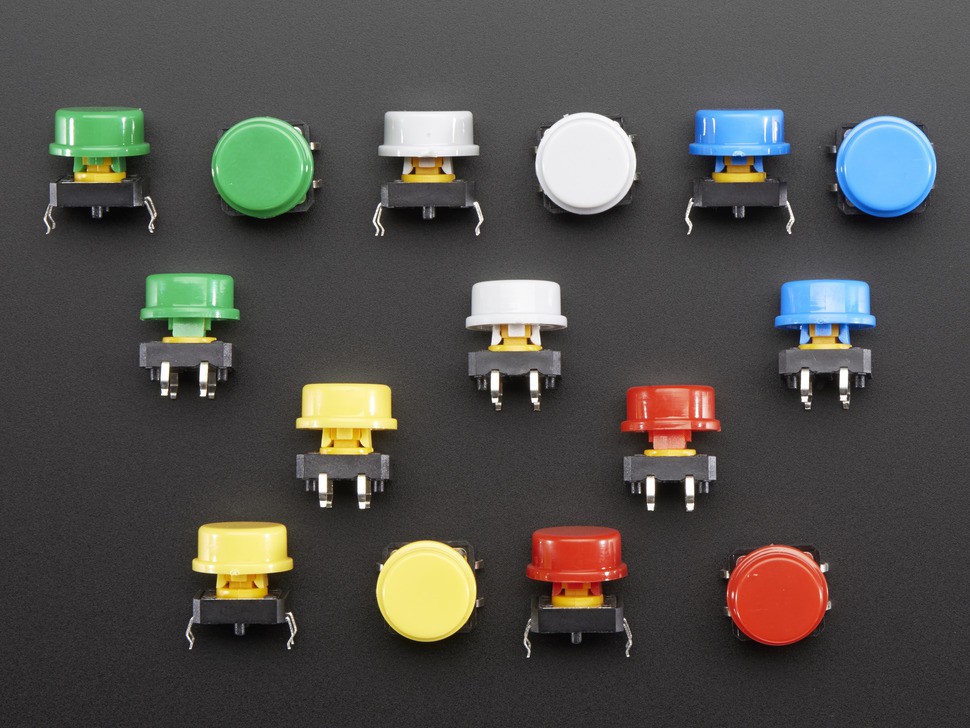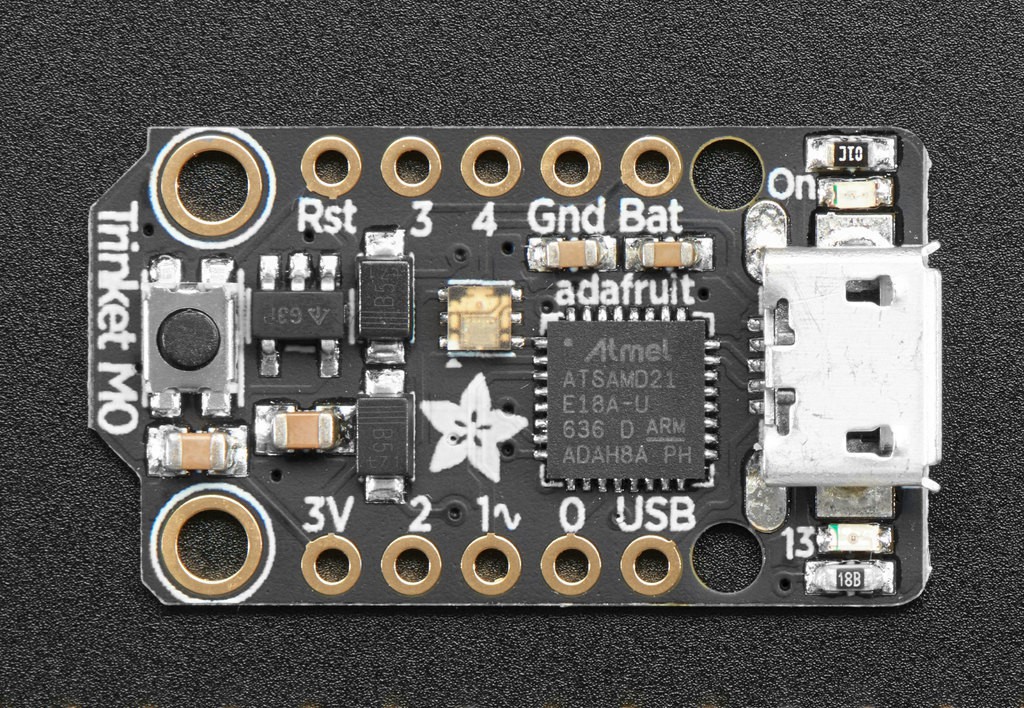As part of a Design thinking approach, we have implemented a user-centric approach to target their needs and determine a solution taking into account their expectations and the technological possibilities in order to be able to carry out a viable project.

This approach will help us enter an iterative loop to design a solution, test it with users , collect their feedbacks and improve the solution.

- User needs :
I used my experience as occupational therapist (14 years in rehabilitation) and worked with a panel of three wheelchair users to collect their expectations, understand their needs, collect their opinions and their impressions. By taking into account the advantages and disadvantages of existing solutions, we were able to determine different functions and conditions for the solutions:
The device will allow users to play video games and control a mouse easily.
The idea is that the device takes the form of a box that is fixed in place of the existing joystick cap
It must be adaptable in size and shape to meet everyone's ergonomic needs, the gripping handle resuming the design of their usual joystick (standard or modified by therapists to facilitate gripping).
The choice of color is also decisive and of great interest to match the taste of the user and ensure that the aid pleases in its visual aspect.
It must be light and mus’nt interfere with the movements of the joystick, don’t represent a risk when driving the wheelchair, have a reduced size and a certain sealing.
It must be firmly attached to the metal rod of the wheelchair joystick (two sizes of joystick bar exist on the market: diameter 4.8 and 6.35 mm) ) and can be easily removed if necessary.
The device should connect to hardware (smartphone, PC, etc.) to emulate a mouse or to a suitable video game interface (XAC, HoriFlex) to emulate a game stick.
Ideally, it should be wireless, to limit third-party intervention during installation in order to maximize user independence.
The sensitivity, the dead zone, the speed of the joystick, the inversion of the axes must be easily adjustable and programmable to meet the possible needs of the user.
The device must communicate in different ways with users using multimodal communication modes to adapt to the disabilities of the greatest number ( visual, auditory…) Visual and auditory feedback is to be expected.
It must be financially accessible and easily reproducible, modifiable and customizable.
- Technical choices
Taking into consideration the need for customization, accessibility and reproducibility, 3D printing was imposed on us for the realization of the enclosure. We have been using it for several years in various assistive device projects, and its ease of implementation, its speed and it lower cost present a major ally for our project and to produce the first prototypes.
The idea is to offer an easily customizable box which host the electronic stuff and on which you can add the handle that suits user’s need.
Beyond the handle, we made choice to add an other user interface, two switch buttons located on the case to have :
- clicks when using the mouse function(left and right)
- reset position button when using the stick function
We chose colorful round tactile switch button from adafruit

For the Microcontroller, we had to choose open and well-documented hardware, easily programmable for which libraries and code exist, within a contained budget.
After prototyping with Arduino micro and leonardo boards, our choice fell on a small-sized SAMD 21 microcontroller with HID functions.

We chose the Trinket M0 board produced by adafruit for its compactness, its possibility of programming it with the Arduino IDE or in circuitpython, the on-board LEDs, its documentation and the community work that it surrounds.
For motion detection, we chose Joy-it's SEN MPU6050 board. It’s a 6 DoF I2C Module based on an MPU6050 combining a 3-axis accelerometer and a 3-axis gyroscope. Its easily findable documentation, existing codes and its affordable price helped us to select this material.

Regarding communication, we have chosen a USB cable connection, which is faster to implement, a wireless connection remains a medium-term objective to facilitate use. Regarding multimodal accessibility, to go faster we have chosen to doesn’t implement visual and sound feedback, but this will have to be done shortly.
- Business model, viability :
This aspect will be more detailed in a specific log, but here are some great ideas.
We are considering a low-cost solution that can be adapted to a maximum of users
The idea behind the project is to make acessible the possibility of playing video games and controlling a mouse as many wheelchair users as possible in the world.
We want to offer an open solution, so that everyone can make it, alone or with the help of others, modify it and use it as they wish.
For sure we can rely on the strength and generosity of the Maker movement, FABLABS and hackerspace all around the world, I’m thinking of very active groups and associations like as example Makers Making change, AT makers and users, Able gamers, My Human kit and many others exiting.
We will also have to work with various associations supporting users, I am thinking of TechLab APF France handicap and other association here in France, and consider other international partnership.
A few years ago I worked with UCPLA which became Momentum, and I think our project should interest them. At the time, they made me discover the activities of the Emerging techlab and I would also like to get in touch with them
We are also considering a commercial approach to allow access to as many people as possible. This could be done in the form of a kit, a final product, and we will detail this point in a dedicated log.
After studying user needs, making technical choices, we started an iterative process to design prototypes, test and improve them.
 Julien OUDIN
Julien OUDIN
Discussions
Become a Hackaday.io Member
Create an account to leave a comment. Already have an account? Log In.